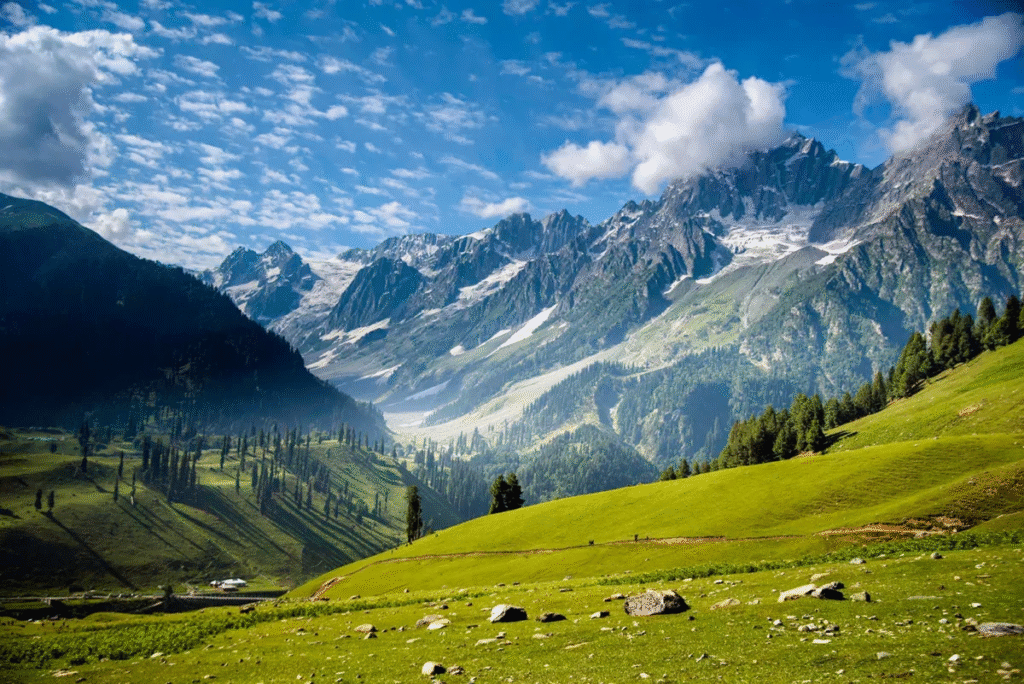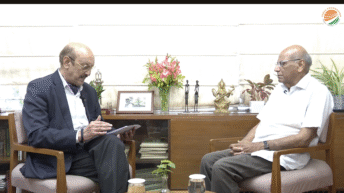
Recently, Congress President Kharge was addressing his party members. He lectured them on the circumstances surrounding Jammu and Kashmir’s accession to the Indian Union in 1947. He asserted that Nehru and Patel were both interested in the accession of Jammu and Kashmir to the Indian Union. However, Maharaja Hari Singh delayed it, and thus the Kashmir imbroglio ensued.
It is a typical way of distorting history and absolving itself of the Himalayan blunders that were made at a crucial historical moment. Kharge put the onus on Maharaja Hari Singh, the then ruler of the state.
Nehru’s antipathy for the Maharaja of Jammu and Kashmir was never hidden from the political actors of the day. One reason was that the Maharaja regarded Sheikh Abdullaj as a seditionist and not a farsighted political leader. Nor did the Maharaja consider the Sheikh the sole leader of Kashmir, representing the entire state.
The House of Mirwaiz of Srinagar, which had financially supported the Sheikh when he was a student at the Aligarh Muslim University, enjoyed a large following among the people of the valley, including the Kashmiri Pandits, whom he cared for and respected as the indigenous people.
When the Sheikh betrayed Mirwaiz House and made contact with Nehru, the first thing he did was to whisper into his ears that the Mirwaiz House was pro-Pakistani and should be discarded as an undesirable entity. A democratic Nehru should have taken the Mirwaiz on board when the accession process was taking place. He did not. The history of post-independence Kashmir shows how intransigent Nehru was. If an honest post-independence history of Kashmir were written, the role of the Mirwaiz House would fill the most important chapter of that narrative. Contemporary Congress leadership will look at Kashmiri history only through the Nehru-Sheikh prism.
Kharge’s lecture on the history of Kashmir’s accession is dismally ill-informed. Many questions can be raised, and it is the moral duty of the party’s think-tank to do some hard work on the subject Let us make a factual analysis of what Kharge says about Kashmir accession.
1. Sardar Patel, the then Home Minister, peacefully integrated about 560 princely states into the Indian Union. Why did Prime Minister Nehru take away only the J&K portfolio from the Home Minister and retain it for himself? The reason for doing so, given by Nehru himself, was that “Only I know how to handle Kashmir”. The Sardar integrated 560 states without hassle, but the one and only one which Nehru handled has brought untold suffering to the people of the State and the nation as well.
2. Kharge says Nehru knew as early as September 1947 that Pakistan was planning an attack on Kashmir. Why did he not take action to preempt Pakistan’s perfidy? All he did was to write a laconic letter to his Home Minister informing him about the news he had received. He thought the Sardar was competent to meet the challenge from Pakistan, but not competent enough to handle the Kashmir issue, which he had wrested from the Home Minister.
3. As early as the first week of September 1947, Nehru had come to know of the Pakistani army’s plan to attack Kashmir. Around that time, Major Kalkat, then attached to the Banu Regiment, escaped from Pakistan and reported to the Indian army headquarters the conspiracy Pakistan was hatching to grab Kashmir. Seniors in the Indian Army Headquarters were hesitant to believe hi report. He was brought in the presence of Nehru at Teen Murti House. Nehru listened to him patiently, and then, while scolding the Indian army officers for disbelieving Major Kalkat, swept away a bunch of papers lying on his table and angrily said: ” Search in these papers, you will find a letter revealing the conspiracy hatched in Pakistan.”
The question we should ask Kharge is: what action Nehru took to pre-empt the attack, which actually happened on October 22, nearly 50 days later? None, except for writing a letter to the Sardar. Nehru was the prime minister and also held the charge of foreign affairs. Two inferences can be drawn. Either Nehru wanted to overlook Pakistan’s perfidy, or he lacked courage.
4. It is a fact that Maharaja Hari Singh did send signals to New Delhi that he wanted to accede to India. But Nehru refused to oblige every time, arguing that unless the request came from Sheikh Abdullah, he would not budge. For the Maharaja, the Sheikh was a rebel drawing strength from the Kashmir mosques.
No historian has been able to explain the reason for Nehru’s fascination with the Sheikh. In his biography Atash-e-Chinar, the Sheikh writes: “After all, I have a blood relation with Nehru.” While Nehru had blood relations with the Sheikh, he called Pandit Premnath Dogra, the outstanding leader of Jammu and representing the Dogra history, culture and ethos — (of the same valiant Dogras who under the command of Maharajas Gulab Singh and Ranbir Singh, had conquered the Northern Areas of Ladakh, Gilgit, Baltistan, Hunza, Nagar, Chitral etc., and formed the present State of Jammu and Kashmir) — a seditionist and communalist for leading Praja Parishad movement. History has proved that the Praja Parishad Movement was the only true nationalist movement in J&K.
5 How come Nehru’s “democratic and secular” ideology evaporated in thin air when, just five years after India’s independence, the Sheikh shifted the goal post from pro-Indian to pro-independence ideology? Nehru managed to arrest and depose him, not directly but through two proxies, Maulana Abul Kalam Azad and Rafi Ahmad Qidwai, while he was on an excursion in London. Don’t be under the misconception that these proxies were motivated by any nationalistic impulse. Their main concern was about the adverse reaction in the length and breadth of India that could spring from the Shaikh’s intransigence.
6. Hari Singh was promised by Nehru that he would be given fair treatment if he only agreed to be away from Kashmir for six months. The Maharaja agreed and left. Just a month after his departure, the Sheikh insisted that Nehru abolish the monarchy and remove the Maharaja. Maharaja Hari Singh, a soldier and a nationalist in body and in spirit, kept his word while his handlers, the men of straw, behaved perfidiously. Nehru opposed monarchy, which he removed, but replaced it with the dictatorship of his ally.
7. Assuming that Nehru was right in what he thought and did about Kashmir, as Kharge thinks, how does history look at it? It speaks of nearly eight decades of acrimonious relations between Srinagar and New Delhi; eight decades of animosity and bitter fighting with Pakistan; alienating western and Islamic countries on the issue of Kashmir, and causing immeasurable loss in terms of life and property. The slogan of Azadi is embedded deep in the minds of Kashmiris, old and young. Would Maharaj Hari Singh have been wrong if he had asked for Azadi? Did not his Prime Minister, R.C. Kak, say that the Maharaja was negotiating with the concerned parties for the independence of the state? Did he deserve to be handcuffed and paraded publicly through Lal Chowk, Srinagar? Did Nehru take cognisance of Kak’s statement?
8. When, for the first time, the formal request of the Maharaja for military support was discussed on 25 october 1947 in the Defence Committee in New Delh, presided over by Lord Mountbatten as Governor General and attended by Nehru, Patel, Gen Bucher the British army chef-of-staff, General Cariappa and others, the British commanders strongly spoke against dispatching Indian troops to save Srinagar. They argued about problems of connectivity, supply line, winter, snowfall and other logistical issues. For one hour, Nehru kept listening without refuting their argument. Patel waited to know what Nehru had to say. When he found that Nehru had succumbed and was not countering the colonial power, he abruptly turned to Nehru and said, “Jawaharlal, do you want Kashmir or not? Say yes, or no?” Cornered, Nehru said yes. Instantaneously, Patel turned to General Cariappa (nominated as successor to Gen Bucher) and said, ” General, road or no road, snow or rain, I want Indian troops to be in Srinagar tomorrow morning”. The same evening, General Bucher, the British C-in-C of the Indian army, resigned. Gen Cariappa took charge. That night, the Sikh Light Infantry was moved from Patiala and airlifted to the Damodar airport in Srinagar, where the first encounter with the invading Pakistani army in civilian dress took place, and Major Somnath Sharma of the Sikh LI was martyred.
Conclusion
I hope that after reading this rejoinder, Mr Kharge and his team will revisit the history of Maharaja Hari Singh’s role dispassionately. Shriman Hari Singh, the last Maharaja, represented not just the ruling house of Jammu and Kashmir but the institution that expanded the State of Jammu and Kashmir, whose Himalayan boundaries protect the northern frontier of the Republic of India. Those forbidding Himalayan heights and gorges are littered with the blood of great Dogra soldiers. Let us accept that verdict and pay homage to the martyrs who won the crown of Kashmir for the Indian Union through their supreme sacrifice.






Add comment